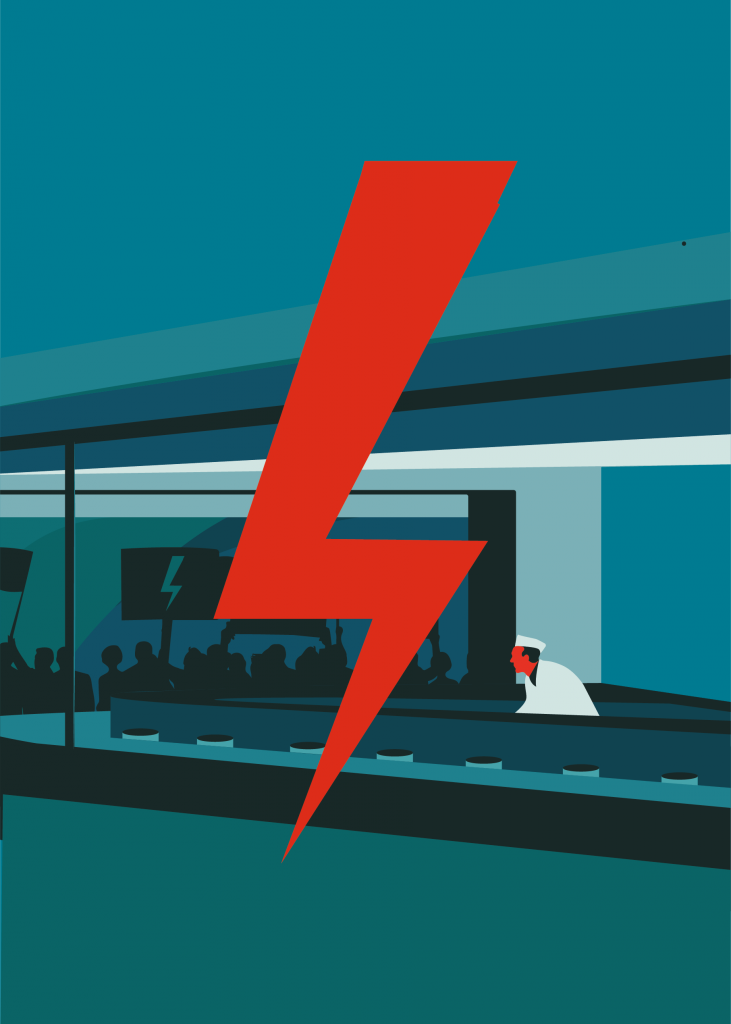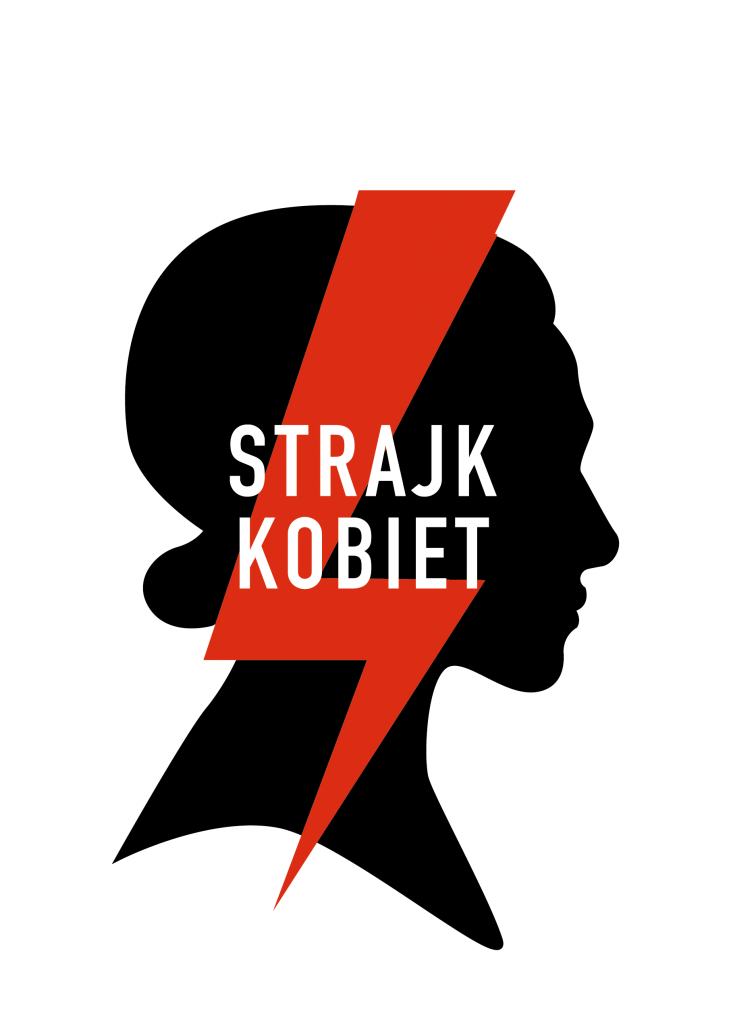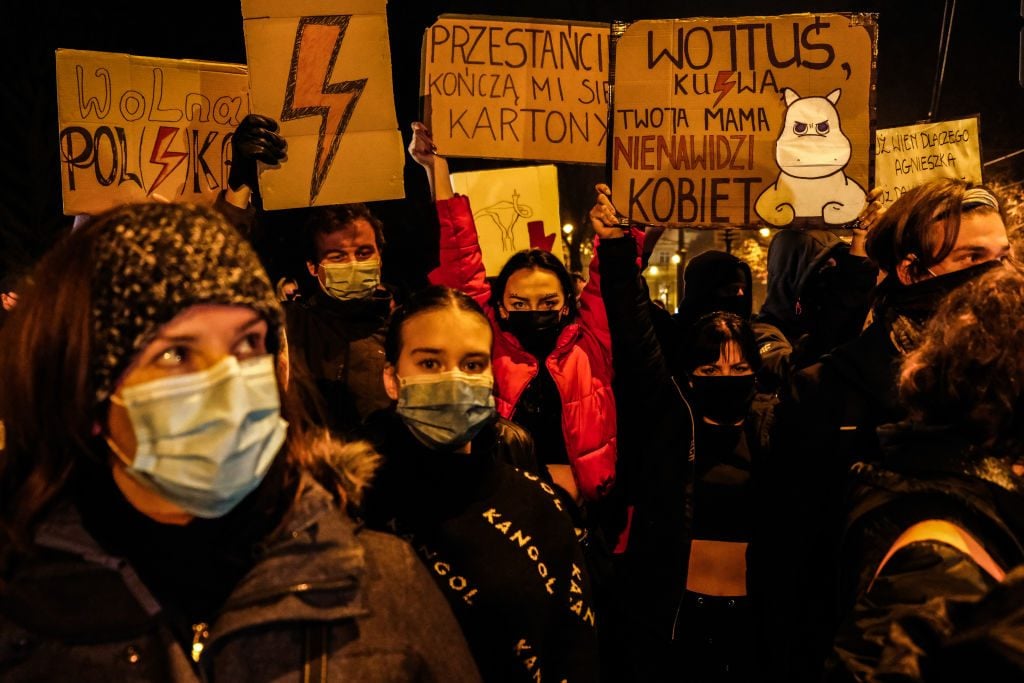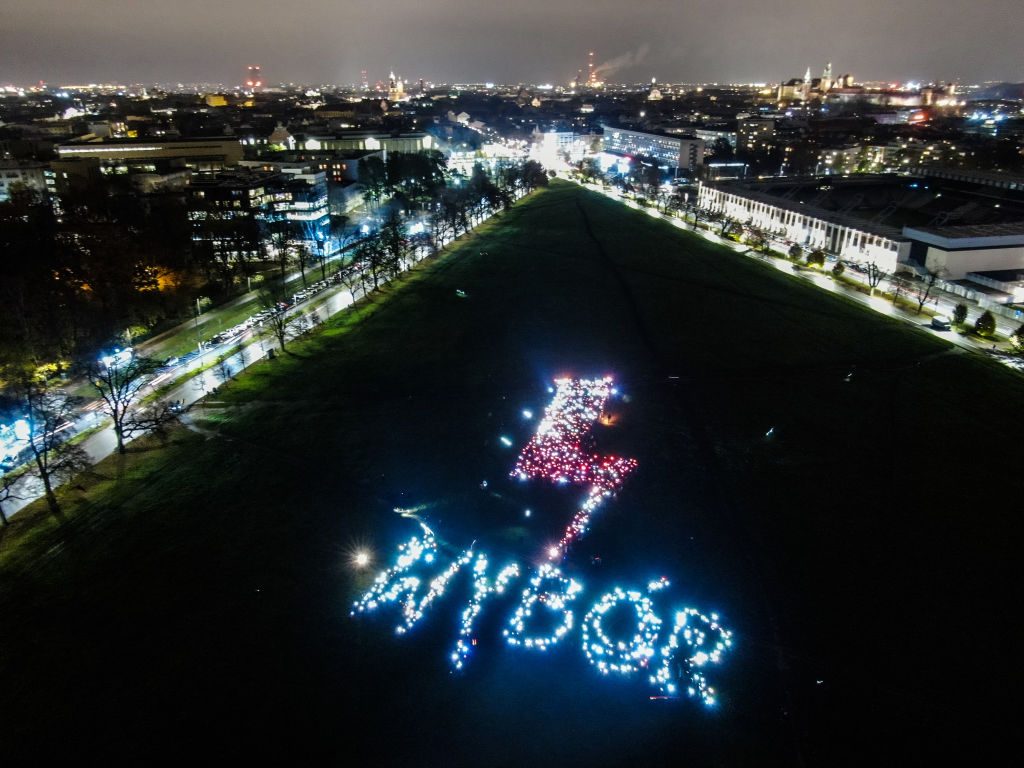Politics
Meet the Artist Behind the Lighting Bolt Design That Has Become the Symbol of Women’s Rights in an Increasingly Oppressive Poland
The lightning bolt represents women's power and serves as a warning to the Polish government.

The lightning bolt represents women's power and serves as a warning to the Polish government.

Kate Brown

A red lightning bolt has become a powerful symbol of Poland’s feminist movement, which has rocked the country with the largest protests since the fall of the Soviet Union in 1989.
The illustration is the work of artist, illustrator, and designer Ola Jasionowska, whose simple and remix-able logo. The demonstrations, which began on October 22, are pushing back against a proposed law that would outlaw abortion—even in cases where the fetus shows severe and untreatable birth defects.
Jasionowska is an art director at Warsaw City Hall, the headquarters of the Polish capital, and she often works on cultural campaigns for the city. She also frequently collaborates with theaters and museums in Poland to help with their visual branding. “I use the poster as my basic field of expression,” she says.
The symbol originated in a poster depicting the silhouette of a female face with the lightning bolt cutting through it. In the weeks of recent protests, it has been reinterpreted on handmade signs, as tattoos, on face masks, and as tear drops painted on faces.
We spoke to Jasionowska about her visual contribution to the movement.

A photo collage showing portraits of pro-choice activists wearing face masks with red lightning bolts. Photo: Artur Widak/NurPhoto via Getty Images.
How did you come up with this design?
The first poster was of a woman’s profile cut through with lightning bolt. My main thought was to create symbol of women’s power without unnecessary face details that could reveal her age or social status. The lightning bolt represents the power of women and is a warning to the government. I frequently use these simple forms with a limited color palette in my other works.
How did you first share it and how did it get picked up?
Visual language from the first strike, which was held in 2016, was extremely consistent and distinctive. Strike leaders shared files to download so that anybody who was attending or making their own event could use our original visuals. Because events have spread across the whole country, our logotype became visible everywhere: on the streets during protests, through the windows in people’s houses. Later, when the logotype reached other countries, it started taking on new details characteristic of other regions and countries.

The first poster which later became a logotype for Ogólnopolski Strajk Kobiet (Polish Women on Strike), 2016. Courtesy Ola Jasionowska.
What do you think makes the lightning bolt so appealing to protesters?
I think there are two main reasons. One is that we share our files online with protesters. Another reason is that our message was comprehensible and peaceful. In my opinion, it’s easiest for different groups of people with different expressions to identify with that kind of symbolism.
What is your favorite reinterpretation of the symbol and why?
My favorite interpretations of the signs are all handmade. What I most love about them is their imperfection, which shows engagement and a sense of belonging to a bigger movement. I guess people decide to use it so often because it is easy to copy.

Protesters hold banners during the 12th day of protests against the Constitutional Court ruling on tightening the abortion law. Photo: Omar Marques/Getty Images.
The lightning bolt has been used by fascist parties throughout history, and some media have brought this up. What’s your response?
Public media in Poland works in tandem with the ruling Law and Justice party’s will, so far-right narratives in our country will try to assign liberals and feminists this fascist connotation. There, abortions are fascist, embryo and fetal pathology abortions are called eugenics and fascist, and the LGBTQIA community is fascist, communist, and a representation of all that is bad. All of that is a campaign to discredit and to divide society. Calling people who fight for human rights, including minority rights and women’s rights, “fascist” is so dumb and cruel. The lightning bolt represents a movement with values that are the opposite of fascism: Freedom is our key message.

An aerial view of people who gather and light up their smartphones or lanterns to form an inscription saying WYBÓR (“choice” in English) along with a lightning bolt. Photo: Omar Marques/Getty Images.
What is your stance on the government and its proposed ban?
The tribunal’s judgement on abortion law is devastating and condemns women in Poland to suffering on many levels. Primarily, it takes away the possibility of making decisions about ourselves, and self-determination makes us free people. Secondly, it condemns mothers to constantly fear for the future of their families. Thirdly, the judgment is the consistent implementation policy of the PIS (Law and Justice) party to turn Poland into a church state, regardless of the fact that this is 2020 and there is no church law in our country.